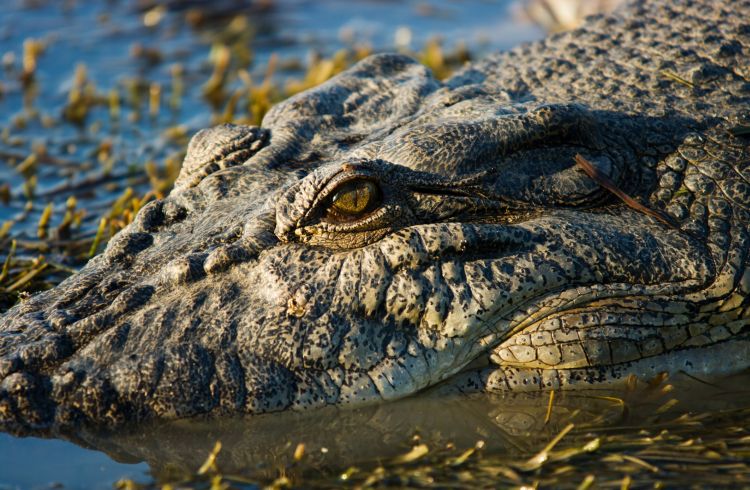Crocodile Safety - What You Need To Know
Crocodiles are something travelers need to consider while traveling in the northern parts of Australia. Being forewarned means you can enjoy the region's natural beauty and stay safe.
 Photo © GettyImages/renelo
Photo © GettyImages/renelo
Crocodiles In Australia
When people think of the top end of Australia, more often than not crocodiles and their toothy grins will come to mind. Crocodiles and their relatives have been on Earth for ~84 million years and are the closest living relatives to birds. These iconic reptilian predators inhabit mangrove wetlands, creeks, rivers and coastal areas in the Northern Territory; and have been spotted as far south as Broome in Western Australia and Gladstone in Queensland.
There are two types of crocodiles:
Freshwater (Freshies)
These reptiles grow to around 10ft (3m) in size, smaller build than their saltwater cousins less threatening and are not capable of killing a human.
Saltwater (Salties)
These guys are much larger than their freshwater cousins, more aggressive and much, much more serious to deal with. Unlike what their name suggests, Saltwater crocodiles aren't just found in the sea. They generally spend the tropical wet season in freshwater swamps and rivers, moving downstream to estuaries in the dry season, and sometimes traveling far out to sea.
As these Salties start at around 2 metres long and can get as big as 15 metres, it's unlikely you'll find one in your shoe or under your teacup. So you do have a chance to be prepared in advance. It can be hard however, to recognise when you've entered croc territory as they're well disguised, rarely showing themselves and approaching their targets very stealthily.
Warning Signs
The vast majority of fatalities and injuries have occurred when people have either ignored warning signs or not swum in designated safe areas.
Authorities place warning signs in known locations where crocodiles like to frequent. But.. if there is no sign, it doesn't mean it's croc free.
In saying that, just because there appears to be no crocodiles around, doesn't mean there isn't. These guys are the masters of disguise and stealth. A crocodile can stay submerged for up to four hours.
So don't risk your life and heed the warning signs.
Tips to Stay Croc Safe
As crocs are often found in remote areas and wilderness, help could be far off, so it's best to err on the side of caution and pay attention to these tips:
How do I avoid a croc attack? Thinking about swimming or boating:
If you see a crocodile sign, do not go swimming, padling or wading. At all. Not even your big toe. If you're in an area where you know salties are present, the same thing applies; no swimming. Especially at night. Don't sit on branches overhanging croc creeks Be careful in boats - don't dangle your feet over the edge.
If you're camping, remember, these guys are great at lunging out of the water and grabbing stuff from the banks.
Set up at least 50 metres from the edge of the water Be very cautious about collecting water and don't collect it from the same spot everyday Don't leave leftover food need the water Don't clean fish at the edge of the water or share your fish guts with them.
Simple and flexible travel insurance
You can buy at home or while traveling, and claim online from anywhere in the world. With 150+ adventure activities covered and 24/7 emergency assistance.
Get a quote
No Comments